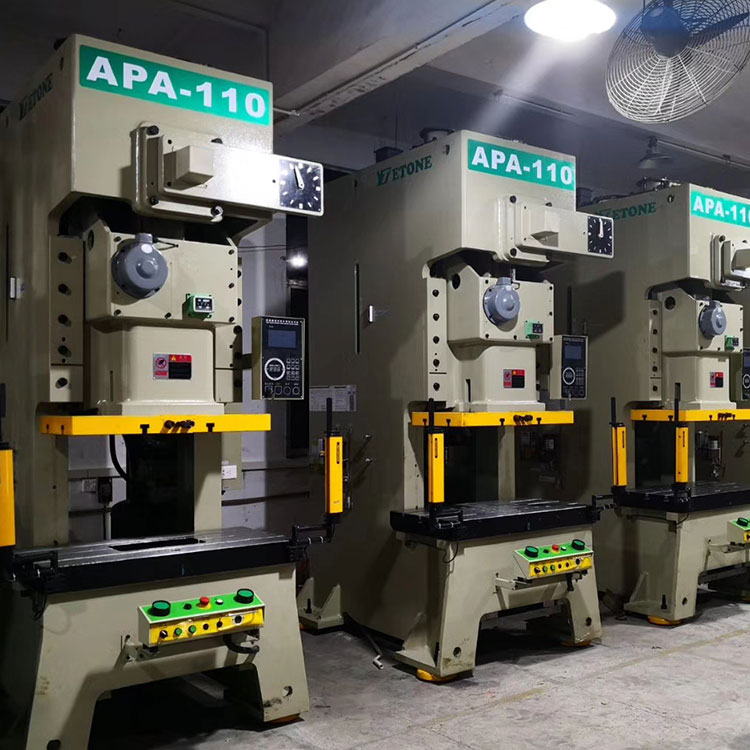Mechanical presses need to strictly comply with safety requirements when in use to ensure the safety of operators. The following are some basic safety requirements:
1. Inspection before operation
Check the condition of the equipment: Before use, it is necessary to check whether the various components of the mechanical press, such as the pressure system, control device, transmission system, etc., are normal.
Ensure the integrity of the safety device: Check whether the safety protection device is intact, especially whether the protective cover, emergency stop button and safety switch are effective.
Lubrication and cleaning: Ensure that the lubrication system of the press is normal, clean the equipment, and prevent dust or foreign matter from affecting the work.
2. Safety during operation
Wear protective equipment: Operators must wear appropriate protective equipment, such as safety glasses, earplugs, gloves and protective shoes.
Correct use of operating methods: Operate in accordance with the equipment operation manual, and do not modify or skip safety procedures without authorization.
Keep the work area clean: The workbench should be kept clean, and ensure that the tools and workpieces are neatly placed to avoid obstructions or accidents.
Prohibit direct entry of hands into the work area: When the press is in operation, avoid any parts entering the work area, and use tools or special equipment for operation.
3. Emergency stop and emergency treatment
Emergency stop function: Operators should be familiar with the location and use of the emergency stop button and be able to stop the machine in time when an abnormal situation occurs.
Handling when a fault occurs: When the equipment fails or is abnormal, it should be stopped immediately, the problem should be checked and repaired. It is strictly forbidden to continue using it without confirmation by professionals.
4. Regular maintenance and care
Regular inspection and maintenance: Regularly check the electrical system, hydraulic system, pneumatic system, transmission system, etc. of the mechanical press to ensure the normal operation of each component.
Replace wearing parts in time: For parts that are easy to wear, such as molds, bearings, seals, etc., they should be checked regularly and replaced in time to avoid equipment failure or safety hazards due to component damage.
5. Safety measures in special working environments
High temperature, low temperature or humid environment: If the press works in a special environment, such as high temperature, low temperature or humid environment, special protection of the equipment is required to prevent environmental factors from affecting equipment performance and operating safety.
Protection of electrical equipment: When operating in a humid or corrosive gas environment, the protection of electrical equipment should be strengthened to avoid electric shock or equipment damage.
6. Operator training
Operator training: All operators must undergo professional training to understand the basic operating procedures, safety requirements and emergency response measures of the equipment.
Enhance safety awareness: Strengthen safety awareness training and conduct safety drills regularly to ensure that operators can respond correctly in emergency situations.
7. Alarm and monitoring system
Use alarm system: Mechanical presses should be equipped with alarm systems. When the equipment is abnormal, it can issue an alarm in time to remind operators to take measures.
Monitor equipment operation: By installing monitoring equipment, the operating status of the press can be monitored in real time, and abnormalities can be detected and handled in time.
By complying with these safety use requirements, the risk of accidents during the use of mechanical presses can be effectively reduced, ensuring the life safety of operators and the normal operation of equipment.


